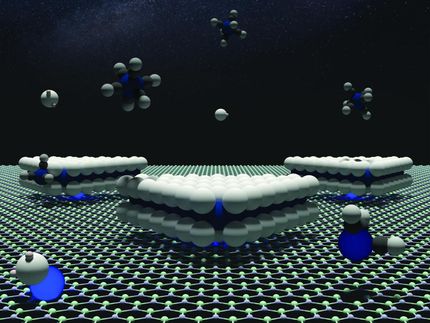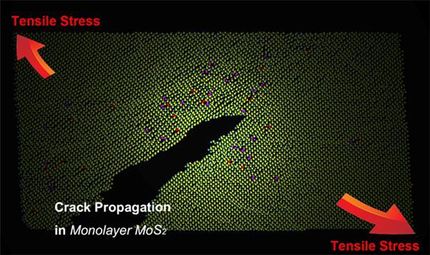New method for determining exchange energy in 2D materials
Detective work yielded a simple solution
Researchers from the University of Basel have looked at how the ferromagnetic properties of electrons in the two-dimensional semiconductor molybdenum disulfide can be better understood. They revealed a surprisingly simple way of measuring the energy needed to flip an electron spin.
Ferromagnetism is an important physical phenomenon that plays a key role in many technologies. It is well-known that metals such as iron, cobalt and nickel are magnetic at room temperature because their electron spins are aligned in parallel — and it is only at very high temperatures that these materials lose their magnetic properties.
Researchers led by Professor Richard Warburton of the Department of Physics and the Swiss Nanoscience Institute of the University of Basel have shown that molybdenum disulfide also exhibits ferromagnetic properties under certain conditions. When subjected to low temperatures and an external magnetic field, the electron spins in this material all point in the same direction.
In their latest study, published in the journal Physical Review Letters, the researchers determined how much energy it takes to flip an individual electron spin within this ferromagnetic state. This “exchange energy” is significant because it describes the stability of the ferromagnetism.
Detective work yielded a simple solution
“We excited molybdenum disulfide using a laser and analyzed the spectral lines it emitted,” explains Dr. Nadine Leisgang, main author of the study. Given that each spectral line corresponds to a specific wavelength and energy, the researchers were able to determine the exchange energy by measuring the separation between specific spectral lines. They found that in molybdenum disulfide, this energy is only about 10 times smaller than in iron — indicating that the material’s ferromagnetism is highly stable.
“Although the solution seems simple, it took considerable detective work to allocate the spectral lines correctly,” says Warburton.
Two-dimensional materials
2D materials play a key role in materials research thanks to their special physical properties, which are the result of quantum mechanical effects. They can also be stacked to form “van der Waals heterostructures.”
In the example seen in this study, the molybdenum disulfide layer is surrounded by hexagonal boron nitride and graphene. These layers are held together by weak van der Waals bonds and are of interest in the fields of electronics and optoelectronics thanks to their unique properties. Understanding their electrical and optical properties is vital in order to apply them to future technologies.
Original publication
Original publication
Nadine Leisgang, Dmitry Miserev, Hinrich Mattiat, Lukas Schneider, Lukas Sponfeldner, Kenji Watanabe, Takashi Taniguchi, Martino Poggio, Richard J. Warburton; "Exchange Energy of the Ferromagnetic Electronic Ground State in a Monolayer Semiconductor"; Physical Review Letters, Volume 133, 2024-7-8
Organizations
Other news from the department science

Get the chemical industry in your inbox
By submitting this form you agree that LUMITOS AG will send you the newsletter(s) selected above by email. Your data will not be passed on to third parties. Your data will be stored and processed in accordance with our data protection regulations. LUMITOS may contact you by email for the purpose of advertising or market and opinion surveys. You can revoke your consent at any time without giving reasons to LUMITOS AG, Ernst-Augustin-Str. 2, 12489 Berlin, Germany or by e-mail at revoke@lumitos.com with effect for the future. In addition, each email contains a link to unsubscribe from the corresponding newsletter.






























































